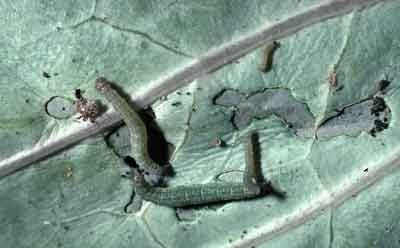Crop reports
Asparagus. This past Thursday night and Friday morning, May 15-16, saw temperatures at the Michigan State University Hart Enviro-weather station dip to below freezing for six hours. Frost damage was scattered with some fields escaping unscathed and others being hit harder. Damaged fields were either “picked through” with damaged spears discarded, or in some cases were mowed.
Continue to keep an eye out for Phytophthora asparagi symptoms in fields with a history of this problem. It’s been wetter this May, with the MSU Hart Enviro-weather station recording 12 days with rainfall totaling 4 inches, while May 2013 it recorded only six rainy days with rainfall totaling 2 inches.
As of last Thursday, May 15, consultants reported roughly 75 percent of carrots had been planted by Oceana and Mason county growers with good emergence, but slow early growth, which has likely sped with warmer weather.
Celery planting has continued. One message growers have consistently given this year: re-used flats tend to have transplants with more uneven growth, potentially because used flats carry over root pathogens from previous years. Consider the economics of purchasing cheaper, newer flats that are not reusable versus results you have observed in the field from planting plug trays from heavy-duty reusable flats that may contain plants with uneven growth. Disinfecting reusable flats is another option that can help reduce pathogen carryover.
Cole crops. Diamondback moth adults were spotted in Southeast Michigan this week and may become active and lay eggs in West Central Michigan cole crops soon. Hatching larvae immediately tunnel into leaves and are not visible until they molt a first time and start feeding externally, often producing “window pane” damage, as larvae scrape off the leaf surface and leave clear tissue behind.
One way to tell diamondback moth larvae apart from other caterpillars is to disturb them by touching them. Diamondback moth larvae, unlike other caterpillars, wiggle vigorously when disturbed and may even “bungee jump” from the leaf on a spun silk cord, their way of avoiding predators and then climbing back to the leaf up their escape cord.
Imported cabbage worm butterflies are also active at low levels and could start laying eggs soon. There are good conventional and organic options for control of caterpillars later this season once populations build.

Diamondback moth adults were spotted in Southeast Michigan this week and may become active soon in our area. Larvae that hatch from eggs first bore into leaves, but as they get larger, they will scrape away plant tissue to produce distinct “window pane” damage. Photo: Alton N. Sparks, Jr., University of Georgia, Bugwood.org.
The main focus now in onions is killing barley nurse crops in conventional fields. There is concern in some wet areas that it will not be possible to enter fields to apply a grass herbicide quickly enough. In these instances, consider hiring a plane or helicopter applicator to apply herbicide. According to Cornell University Cooperative Extension, when barley windbreaks grow too large they can trap air between the rows to cause seedling “burn off” in addition to competing for water and nutrients. Michigan State University Extension weed specialist Bernie Zandstra’s experience suggests that, as a result, aggressively growing barley can reduce your onion stand quickly in only a week if the weather is right. Grass herbicides include Fusilade (active ingredient fluazipop-P), Select Max (active ingredient clethodim) and Poast (active ingredient sethoxydim). Cornell Extension reports Select Max gives quicker kill than Fusilade. All of these work best when the barley is actively growing and not under stress.
Peas and beans were up in Newaygo County as of last week. Many herbicides used for post-emergence weed control in peas require precise timing, which in turn requires counting leaves on your pea plants. When doing this, note that the first one to two nodes on peas only produces scale leaves that are often below the soil surface; these need to be included in leaf counts, so dig up a few plants. The “Afila” type peas grown by some processors also do not have true leaves. Instead, they have stipules with tendrils that can be counted. See a nice photo showing how to count pea leaves on both regular and afila varieties.
Potatoes have emerged in Southwest Michigan, but emergence has not been widely observed to our East in Montcalm County.
Early field plantings of sweet corn were up in Ottawa County as of last Friday, May 16. Black cutworm captures continue to be high to our south in Indiana, but the few traps run by MSU have not captured large numbers to date. Now is a good time for growers planting varieties with transgenic resistance to find out which Bt trait their sweet corn has. Some traits help control a variety of caterpillars, while others control some species (e.g., corn borer) but only suppress others, like western bean cutworm. Check out this “Handy Dandy Bt Trait Table” from MSU to find out which pests your corn’s resistance package will help control. The table is useful for both field and sweet corn.
Source: MSUE